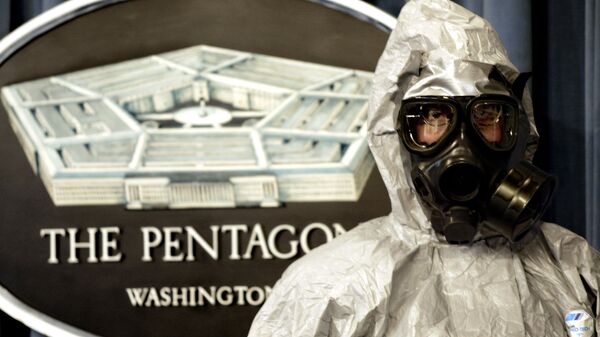Under the program, the US military tracks chemical and biological warfare agents, develops anti-contamination equipment and carries out scientific research.
The Pentagon stressed in the paper that running the program “has become increasingly difficult,” due to recent budget cuts.
“Reduced defense spending will constrain the ability of the CBDP to develop, procure, and sustain Joint Service priority capabilities that improve the ability of the Warfighter to counter,” the report reads.
Official statistics reveal that CBDP budget cuts have not been substantial. Within last two years, the program’s budget has been decreased by some $100 million, leaving it with a budget of about one billion dollars.
The Pentagon, however, is ringing alarm bells, claiming that the cuts are leading to “increasingly complex program management decisions with no margins for error.”
“The combination of evolving [chemical and biological] threats, reduced budgets, and uncertain fiscal futures forces the [CBDP] to focus its limited resources to address the highest priorities and greatest risks.”
In the US, some 26 US Defense Department agencies share responsibilities for dealing with chemical and biological threats, according a 2015 US Government Accountability Office report.
The United States, as well as the majority of international powers, have adhered to treaties devoted to preventing the spread of nuclear, chemical and other weapons of mass destruction.
The UN has found no proof that the Syrian government is responsible for poisoning civilians. The BBC later also reported that Syrian rebels backed by Washington “had the capability or intention to use Sarin."
The US has also been accused of delivering "biological agents, including anthrax" and "vital ingredients for chemical weapons" to Iraq during Baghdad’s standoff with Tehran in the late 1980s, The Guardian reported in 2002.





